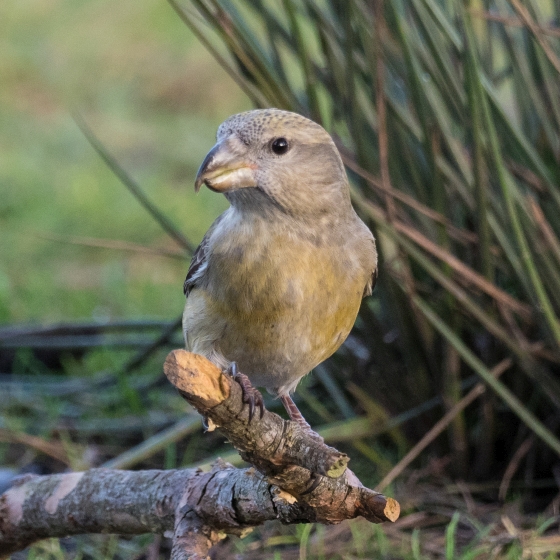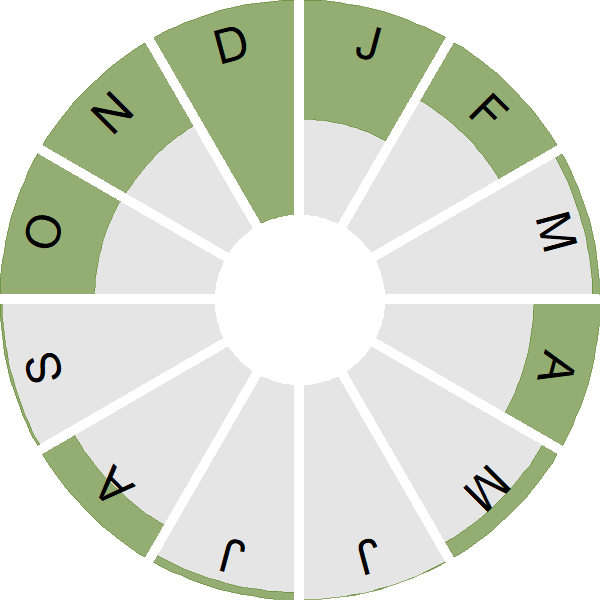Parrot Crossbill

Introduction
Separating Parrot Crossbill from Common and Scottish Crossbills is challenging. The Parrot Crossbill is bulkier and has a subtly different call.
Most interactions between Parrot Crossbill and birdwatchers occur during winter when the species occasionally irrupts from its native northern Europe in search of pine seed. Most UK 'invasions' of Parrot Crossbill number in the tens of individuals.
There is a small breeding population of Parrot Crossbill in the Caledonian pine forest of north-east Scotland. The winter range is similarly restricted.

Key Stats
Identification
Songs and Calls
Song:
Call:
Status and Trends
Conservation Status
Population Change
This species is occasionally recorded in the UK during 'irruption' years when large numbers of crossbills arrive from Scandinavia. Large irruptions occurred in 1962/63 and 1982/83. The first confirmed breeding record in the UK occurred in 1984 in Norfolk (Catley & Hursthouse 1985). Re-assessment of previous Crossbill records in Scotland from specimens indicates that Parrot Crossbill were scarce during the twentieth century but a survey of Crossbills in Scotland in 2008 found around 100 Parrot Crossbills (Summers & Buckland 2011) suggesting that a possible change of status may have occurred. However, this is unclear as the records may relate to an irruption year: hence, further information is needed to confirm the status of this species in the UK.
Distribution
Parrot Crossbill is a rare resident of ancient native pinewoods and large plantations in northern and northeastern Scotland. Identification issues make getting an accurate picture of the species' breeding distribution tricky. During the breeding season of 2008–11
Occupied 10-km squares in UK
2007/08–10/11
or view it on Bird Atlas Mapstore.
2008–11
or view it on Bird Atlas Mapstore.
European Distribution Map
Distribution Change
Change in occupied 10-km squares in the UK
from 1981–84 to 2007–11
or view it on Bird Atlas Mapstore.
from 1968–72 to 2008–11
or view it on Bird Atlas Mapstore.
Seasonality
Parrot Crossbill is a very rare resident and rare autumn vagrant.
Weekly pattern of occurrence
The graph shows when the species is present in the UK, with taller bars indicating a higher likelihood of encountering the species in appropriate regions and habitats.

Movement
Britain & Ireland movement
Foreign locations of birds ringed or recovered in Britain & Ireland
Dots show the foreign destinations of birds ringed in Britain & Ireland, and the origins of birds ringed overseas that were subsequently recaptured, resighted or found dead in Britain & Ireland. Dot colours indicate the time of year that the species was present at the location.
- Winter (Nov-Feb)
- Spring (Mar-Apr)
- Summer (May-Jul)
- Autumn (Aug-Oct)

Biology
Productivity and Nesting
Nesting timing
Egg measurements
Clutch Size
Survival and Longevity
Survival is shown as the proportion of birds surviving from one year to the next and is derived from bird ringing data. It can also be used to estimate how long birds typically live.
View number ringed each year in the Online Ringing Report.
Lifespan
Biometrics
Wing length and body weights are from live birds (source).
Ring Size
Classification, names and codes
Classification and Codes
- Order: Passeriformes
- Family: Fringillidae
- Scientific name: Loxia pytyopsittacus
- Authority: von Borkhausen, 1793
- BTO 2-letter code: PC
- BTO 5-letter code: PARCR
- Euring code number: 16680
Alternate species names
- Catalan: trencapinyes becgròs
- Czech: krivka velká
- Danish: Stor Korsnæb
- Dutch: Grote Kruisbek
- Estonian: männi-käbilind
- Finnish: isokäpylintu
- French: Bec-croisé perroquet
- German: Kiefernkreuzschnabel
- Hungarian: nagy keresztcsoru
- Icelandic: Pánefur
- Italian: Crociere delle pinete
- Latvian: priežu krustknabis, priežu putns
- Lithuanian: pušinis kryžiasnapis
- Norwegian: Furukorsnebb
- Polish: krzyzodziób sosnowy
- Portuguese: cruza-bico-papagaio
- Slovak: krivonos sosnový
- Slovenian: veliki krivokljun
- Spanish: Piquituerto lorito
- Swedish: större korsnäbb
Research
Causes of Change and Solutions
Causes of change
It is not yet clear whether the status of Parrot Crossbill has changed and whether it has become a more regular breeding species in the UK. Crossbill populations are prone to fluctuations following 'irruption' years, and the recent high counts in Scotland may relate to an irruption and may not represent a longer term change of status for this species.
More Evidence
More evidence from Conservation Evidence.com
Partners
Citing BirdFacts
If you wish to cite particular content in this page (e.g. a specific value) it is best to use the original sources as linked in the page. For a more general citation of the whole page please use: BTO (20XX) BirdFacts Species: profiles of birds occurring in the United Kingdom. BTO, Thetford (www.bto.org/birdfacts, accessed on xx/xx/xxxx).

